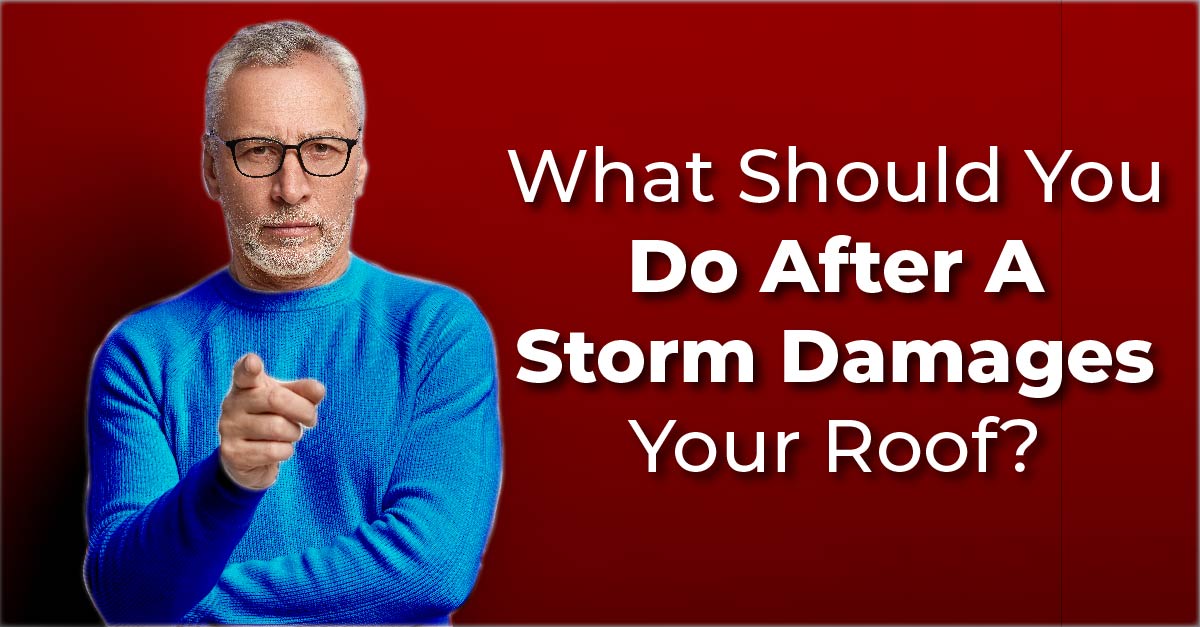
As the weather changes in the Georgetown, Texas area storms become more prevalent, which often spells trouble for roofing systems. Even roofs in tip-top condition can suffer massive storm damage and need a full replacement. Hail, high winds, and falling tree branches can give any homeowner a headache, especially if you don’t know what to do after a storm damages your roof.
Call Your Insurance Company
If you suspect a recent storm has damaged your roof, call your insurer to start the claim process. It is important to file it as soon as possible to minimize the chances of claim denial. Also, keep in mind your policy coverage may vary and your deductible may be more than you anticipated. You will need to pay your policy deductible before the insurance coverage kicks in, so be sure to read through the fine print of your policy to see how much deductible you’re required to pay. When in doubt, call your insurance agent to find out what your insurance policy covers and what it doesn’t.
Call Your Roofer to Come and Inspect the Damage
Next, call your roofing contractor to assess the damage and give an estimate for repairs or replacement. When your roofing system has extensive storm damage, the problems could be much more than what you visually see from the ground level.
Sometimes, the signs of storm damage are pretty obvious, such as water spots on the ceiling and curled or missing shingles. You may also notice broken or damaged roof flashing, wet walls, or water issues around the exterior of your home. However, a professional roofer has the training and expertise to get to the root of the problem and recommend the right restoration.
After the inspection, your roofer will issue you with a project quote you’ll give to your insurance adjuster at your appointment. You should also make sure your roofer is present when the adjuster arrives on site to ensure you’re getting a fair assessment.
Safety Precautions after Storm Damage
Before inspecting the exterior of your home after storm damage, make sure the storm has subsided and it is safe to be outside. If you notice downed power lines, flooding, or electrical hazards, keep away from the area and call 911 immediately.
Even if the coast is clear, watch out for potential hazards— especially around your roof. Check for fallen trees, heavy debris, ice dams, or loose or broken shingles. More importantly, never attempt to climb on your roof to make repairs – roofing work is risky and should be left to the professionals.
Have the Roof Repaired Promptly
Your roof can sustain a greater extent of damage if it isn’t repaired ASAP. If you fail to call your roofer as soon as possible, your home can suffer interior damage as a result of moisture penetration. Over time, the roofing underlayment, decking materials, and insulation will develop moisture damage, rot, and mold and mildew growth.
Replacing Roofs with Insurance
Once your insurance claim is approved, your roofer should begin repairing or replacing your roof immediately. However, insurance coverage can only pay for your new roof if it was damaged by elements outside of human control. For example, if sudden storms such as high winds, hail, hurricanes, tornadoes, or lightning destroy your roof, your homeowner’s insurance policy should cover the cost of replacement.
When filing a claim, be sure to document any damage which occurred and keep receipts for all work done on your home. Many policies will cover such expenses when submitted alongside the claim.
However, keep in mind your homeowner’s insurance coverage will depend on the age of your roof, the weather patterns in your area, and many other factors. The easiest way to know what is covered or what isn’t is by contacting your insurance provider or going over the specifics of your policy.
Many policies don’t cover damage caused by a poorly installed roof. If the damage is because of installation errors, it is considered a warranty issue and not an insurance issue. Insurers also look at the extent of damage before approving a claim. If it is only slight damage, they will compare the cost to repair with your deductible and make a determination. But if the damage is extensive, your insurance company may have to cover the cost of a full roof replacement.
Always Work with a Reliable Local Roofer!
Finally, working with a trusted and local roofer to repair or replace your roof after storm damage can take away some stress. Experienced roofers will be happy to work with your insurance company and won’t demand payments upfront. Stay clear of storm chasers who often take advantage of homeowners during these desperate moments.
If you need your roof replaced after storm damage, consider working with Texas Traditions in the Georgetown Texas area. We are experts in roofing services and will take our time to meticulously inspect your roof and design solutions to suit your lifestyle and budget. Contact us today to schedule a free roof inspection!
